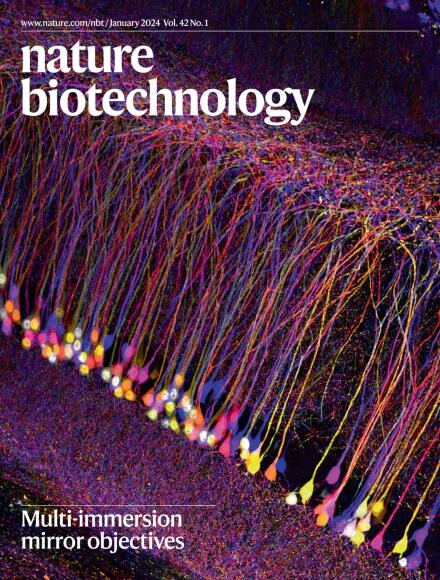用漂流岛评估细胞嵌入指标的局限性
IF 33.1
1区 生物学
Q1 BIOTECHNOLOGY & APPLIED MICROBIOLOGY
引用次数: 0
摘要
生物学研究依赖于单细胞剖面的嵌入,但评估这些嵌入的质量是具有挑战性的。在这里,我们通过训练一个三层感知器Islander来证明当前的评估指标是不完整的。Islander在多种细胞图谱上优于所有领先的嵌入方法,但它扭曲了生物结构,限制了它在生物发现中的应用。然后,我们提出了一个新的度量,scGraph,来帮助标记这种扭曲。本文章由计算机程序翻译,如有差异,请以英文原文为准。

Limitations of cell embedding metrics assessed using drifting islands
Biological studies rely on embeddings of single-cell profiles but assessing the quality of these embeddings is challenging. Here we show that current evaluation metrics are incomplete by training a three-layer perceptron, Islander. Islander outperforms all leading embedding methods on a diverse set of cell atlases but it distorts biological structures, limiting its use for biological discovery. We then present a new metric, scGraph, to help flag such distortions.
求助全文
通过发布文献求助,成功后即可免费获取论文全文。
去求助
来源期刊

Nature biotechnology
工程技术-生物工程与应用微生物
CiteScore
63.00
自引率
1.70%
发文量
382
审稿时长
3 months
期刊介绍:
Nature Biotechnology is a monthly journal that focuses on the science and business of biotechnology. It covers a wide range of topics including technology/methodology advancements in the biological, biomedical, agricultural, and environmental sciences. The journal also explores the commercial, political, ethical, legal, and societal aspects of this research.
The journal serves researchers by providing peer-reviewed research papers in the field of biotechnology. It also serves the business community by delivering news about research developments. This approach ensures that both the scientific and business communities are well-informed and able to stay up-to-date on the latest advancements and opportunities in the field.
Some key areas of interest in which the journal actively seeks research papers include molecular engineering of nucleic acids and proteins, molecular therapy, large-scale biology, computational biology, regenerative medicine, imaging technology, analytical biotechnology, applied immunology, food and agricultural biotechnology, and environmental biotechnology.
In summary, Nature Biotechnology is a comprehensive journal that covers both the scientific and business aspects of biotechnology. It strives to provide researchers with valuable research papers and news while also delivering important scientific advancements to the business community.
 求助内容:
求助内容: 应助结果提醒方式:
应助结果提醒方式:


